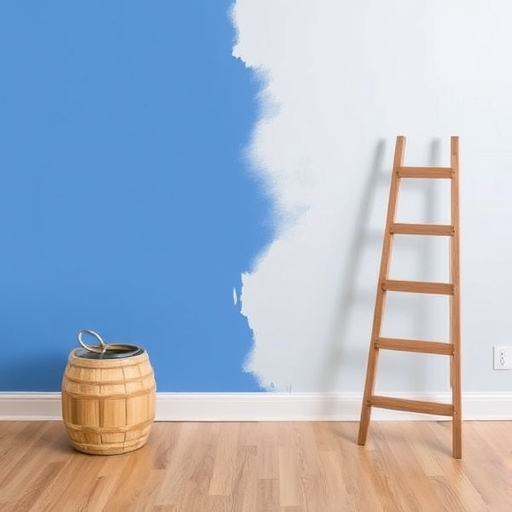How Long Between Coats of Paint: A Comprehensive Guide
Painting can transform any space, but achieving that perfect finish requires more than just slapping on some color. One of the most critical aspects of painting is understanding the drying times between coats. Knowing how long to wait between coats can significantly impact the final look of your project, and it can also influence the durability of the paint job. In this article, we will explore the various factors that affect drying times, the different types of paint, and best practices to ensure a flawless finish.
Understanding Paint Drying Times
Before diving into specifics, it’s essential to understand that paint drying times are categorized into several stages:
1. Touch Dry: The surface feels dry to the touch, but the paint is not fully cured.
2. Handle Dry: The paint can be lightly touched or handled without damaging it.
3. Fully Cured: The paint has completely dried and hardened, achieving maximum durability.
Factors Affecting Drying Times
Several factors can influence how long you should wait between coats of paint:
- Type of Paint: Different paints have different drying times.
- Humidity Levels: High humidity can slow down the drying process.
- Temperature: Warmer temperatures generally speed up drying times.
- Air Circulation: Good airflow can help paint dry faster.
- Surface Type: Porous surfaces absorb moisture, potentially extending drying times.
- Touch Dry: 6-8 hours
- Handle Dry: 24 hours
- Fully Cured: 7-14 days
- Touch Dry: 1-2 hours
- Handle Dry: 2-4 hours
- Fully Cured: 2-4 weeks
- Touch Dry: 20-30 minutes
- Handle Dry: 1-2 hours
- Fully Cured: 24 hours
- Oil-Based Paint: Wait at least 24 hours before applying the second coat.
- Water-Based Paint: You can typically apply the second coat after 2-4 hours.
- Spray Paint: A second coat can usually be applied after 1-2 hours.
- High Humidity: If the humidity is high, it’s best to wait longer than the standard drying times.
- Cold Temperatures: In colder conditions, expect to wait longer for the paint to dry adequately.
- Increasing air circulation (using fans).
- Increasing the temperature in the room.
- Reducing humidity levels.
- Poor adhesion between coats.
- Uneven texture and finish.
- Longer overall drying times.
Different Types of Paint and Their Drying Times
Oil-Based Paint
Oil-based paints are known for their durability and rich finish. However, they take longer to dry compared to water-based paints.
Water-Based Paint
Water-based paints, including latex, are popular due to their quick drying times and easy cleanup.
Spray Paint
Spray paints can vary widely, but they typically dry faster than traditional paints.
Comparison Table: Drying Times for Different Paint Types
| Paint Type | Touch Dry | Handle Dry | Fully Cured |
|---|---|---|---|
| Oil-Based | 6-8 hours | 24 hours | 7-14 days |
| Water-Based | 1-2 hours | 2-4 hours | 2-4 weeks |
| Spray Paint | 20-30 minutes | 1-2 hours | 24 hours |
Best Practices for Applying Multiple Coats
To achieve a flawless finish, follow these best practices:
1. Read the Manufacturer’s Instructions
Always check the label on your paint can. Manufacturers provide specific drying times and recommendations that should be followed for optimal results.
2. Conduct a Touch Test
Before applying the next coat, conduct a touch test. Lightly touch an inconspicuous area to ensure it’s dry. If the paint is still tacky, wait longer.
3. Consider Environmental Conditions
Monitor the temperature and humidity levels in your workspace. If conditions are not ideal, consider using fans or dehumidifiers to accelerate drying.
4. Use a Quality Primer
Using a quality primer can help create a better bond between the surface and the paint, which can reduce the number of coats needed and improve drying times.
5. Apply Thin Coats
Applying thinner coats of paint can help reduce drying times. Thicker coats take longer to dry and can lead to issues like drips and uneven texture.
6. Wait for the Right Time
While it may be tempting to rush through a project, waiting for the right amount of time between coats is crucial for a durable finish.
When to Apply the Second Coat
General Guidelines
Specific Scenarios
Common FAQ
How Can I Speed Up the Drying Process?
You can speed up the drying process by:
What Happens If I Apply a Second Coat Too Soon?
Applying a second coat too soon can lead to:
Can I Paint Over Glossy Surfaces Without Sanding?
While you can paint over glossy surfaces, it’s best to sand them lightly to create a better bond between the paint and the surface.
Do I Need to Wait for a Paint to Cure Before Using the Room?
Yes, it’s advisable to wait until the paint is fully cured before using the room to ensure the best durability and finish.
Is It Necessary to Use a Primer?
Using a primer is not always necessary, but it can enhance adhesion, improve the finish, and reduce the number of paint coats required.
Conclusion
Understanding how long to wait between coats of paint is essential for achieving a professional-looking finish. By considering factors such as the type of paint, environmental conditions, and best practices, you can ensure that your paint job lasts and looks great. Remember to always follow the manufacturer’s guidelines and take your time for the best results. Happy painting!

